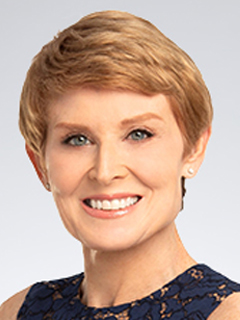January employment solid
The number of multiple job holders increased to 8.8 million.

February 7, 2025
Payroll employment for January rose by 143,000, after rising an upwardly revised 307,000 in December and 261,00 in November. That suggests that the year ended on an even stronger note than originally reported. The fires in Las Angeles took a toll on hiring in the leisure and hospitality sector, which suffered a loss of 3,000 jobs. Food service jobs alone were down nearly 16,000. That is the first decline in food services since June 2024.
Public sector payrolls rose by 23,000 during the month. The gains were split fairly evenly between education and non-education jobs and concentrated in local government.
Private job gains were dominated by a 66,000 gain in healthcare and social assistance and a 34,000 increase in retail hiring. The gains in retail are a bit of a head fake, as January is the largest month of the year for layoffs in retail, which means we saw fewer layoffs than usual last month. That is less a reflection of strength in retail hiring and more due to weak holiday hiring in what was a compressed holiday shopping season.
Computer systems design and related services added 14,000 jobs, reflecting the boom in generative AI. Financial services posted a gain of 7,000 on strength in the insurance industry. Professional and business services shed 11,000; all those losses were in temporary jobs, which dropped by 12,000.
Manufacturing and construction added only modest gains. It was a colder-than-usual January across much of the country, which suppressed gains in construction employment. Builders are still complaining about acute labor shortages; they are among the most dependent upon immigrant labor. Only agriculture has a higher share of foreign-born workers.
Average hourly earnings jumped 0.5%, which pushed year-over-year gains to 4.1%. That is the same as the upwardly revised 4.1% gain in December. The rise in December was initially reported to be 3.9%. Average hours worked fell from 34.2 to 34.1, the lowest number of hours worked since the onset of the pandemic in March 2020. That is likely due to disruptions to work during the fires in California. They were still burning during the week the survey was taken for this report. The gains in hourly earnings during the month helped buoy average weekly earnings.
Separately, the unemployment rate dipped to 4% in January from 4.1% in December. That is the lowest unemployment rate since May 2024. Participation in the labor market edged up to 62.6% in January from 62.5% in December. That is welcome news to the Federal Reserve, which decided to pause rate cuts in January. The surge in the participation rate was driven by a rise in prime-age (25-54) men.
The ranks of those out of work due to inclement weather (aka the fires in California) jumped to 591,000. That is the highest for the month of January since the blizzard of 2011; it was the largest single month since February 2021, when Texas went off the electrical grid due to usually cold winter weather.
The ranks of those out ill during the month of January surged to 1.3 million, the highest level since January 2022 when the number crossed 3 million. That was the height of the highly contagious Omicron wave of COVID.
Multiple job holders increased to 8.8 million, the highest on record, The jump was the largest since December 2022, when households were scrambling to make ends meet during a blistering bout of inflation.
Multiple job holders were once a sign of weakness in the economy. However, since 2000, we have seen the ranks of multiple job holders rise as the expansion matured. That suggests that employers are more willing to juggle the schedules to accommodate multiple job holders as the labor market tightens. The sad underbelly to that observation is that it underscores the rising ranks of inequality and how hard it is for too many households to make ends meet with just one job.
Separately, the much-awaited, annual benchmark revisions show that employment grew by 589,000 less than initially reported since January 2024. That brings the year total down to 1.9 million from 2.2 million last month, the weakest annual pace since 2020. The bulk of that weakness appeared in the first half of the year. The second half of the year was stronger, which helps to explain the acceleration in consumer spending that we have seen since summer.
The data reflects the unemployment insurance records by state, which all employers are compelled to file. It includes an update to what is known as the birth and death rate of new firms. We saw new business formation soar in the wake of the pandemic; some of those businesses are now failing.
Payrolls held up better than expected in the wake of the fires in California, although the disaster did leave an imprint on the data.

Diane Swonk
KPMG Chief Economist
Bottom Line
Payrolls held up better than expected in the wake of the fires in California, although the disaster did leave an imprint on the data. The benchmark revisions suggested that the first half of the year was significantly weaker than the second half. That helps to explain the acceleration in consumer spending we saw in the second half of the year, notably in the fourth quarter. The shifts will reassure the Federal Reserve that its decision to pause was justified.
Subscribe to insights from KPMG Economics
KPMG Economics distributes a wide selection of insight and analysis to help businesses make informed decisions.
Explore more

Employment accelerates at year-end
Improvement reinforces Fed decision to pause.

KPMG Economics
A source for unbiased economic intelligence to help improve strategic decision-making.

New year, new agenda: Beware of unintended consequences
We may be understating the financial market reaction to escalation of geopolitical tensions.
Meet our team
